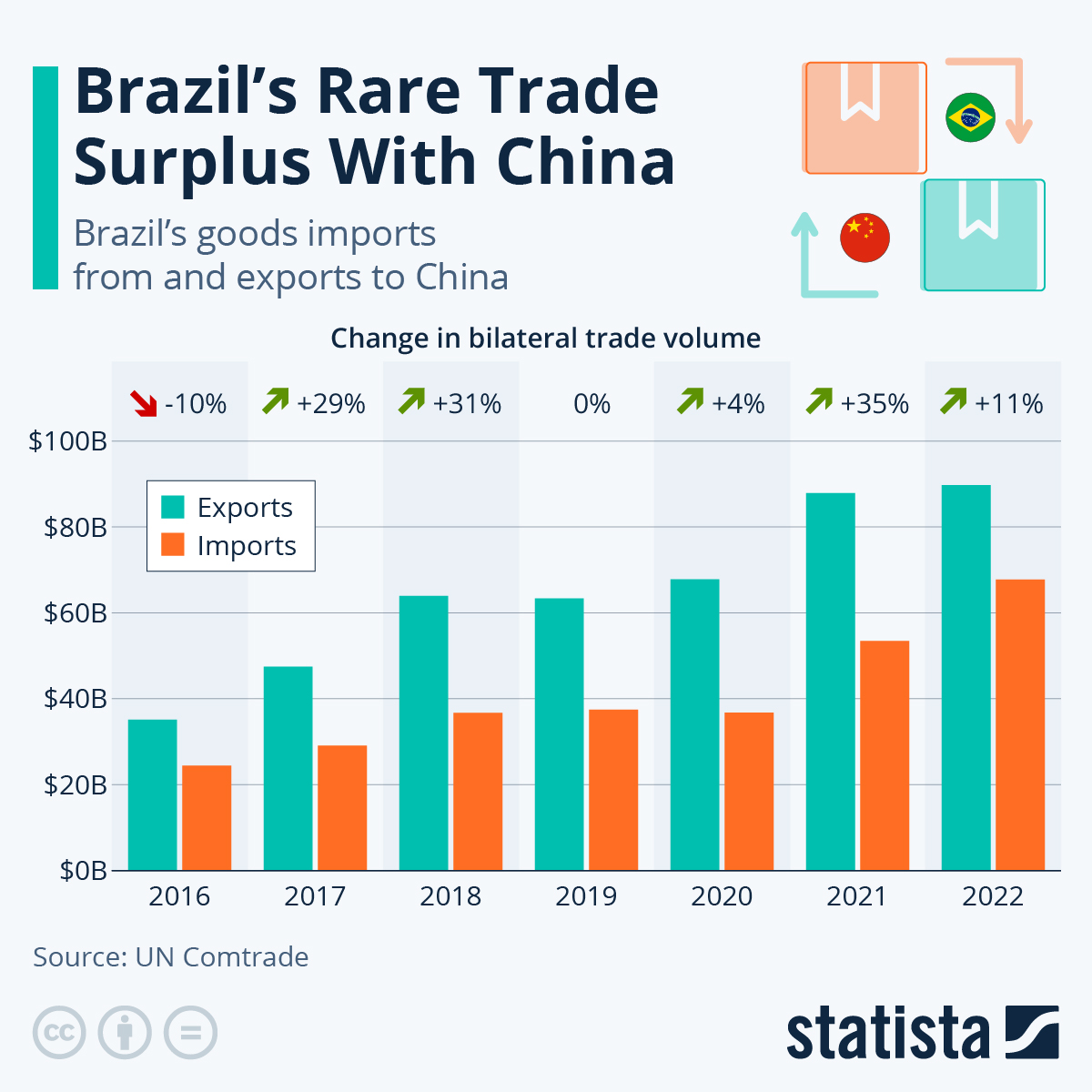
This dovetails nicely with my last editorial.
Brazilian President Luiz Inácio Lula da Silva is headed to Beijing to meet with his Chinese counterpart Xi Jinping this week, as the two countries seek to strengthen already robust bilateral trade relations. Ties had weakened slightly under Brazilian predecessor Jair Bolsonaro, who backed former U.S. President Donald Trump in his anti-China stance. But now, over 20 agreements are now expected to be signed between the two nations.
China is Brazil’s main trading partner. According to data aggregated by Santander, China accounted for 31.3 percent of Brazil’s exports in 2021. This was followed by the United States (11.2 percent), Argentina (4.2 percent) and the Netherlands (3.3 percent). Brazil’s main supplier was again China (22.8 percent), followed by the United States (17.7 percent), Argentina (5.3 percent) and Germany (5.1 percent).
As the following chart shows, Brazilian-Chinese bilateral trade has been strengthening year-on-year, increasing by some 11 percent in 2022 with a total trade increase of $157.5 billion, according to the UN’s Comtrade database. These figures may differ from other sources, if they are based on different indicators.
Another clear trend is that Brazil exports more to China than it imports from it – a rarity, as China, the globe’s manufacturing giant, is usually a greater exporter. China and India are both considered the major manufacturing countries of the BRICS, whereas Brazil and Russia are generally considered to be exporters of raw materials. Exporting manufactured goods usually makes more money than exporting raw materials and so this contrast is particularly surprising. One possible reason for Brazil’s surplus could be that it exports both agricultural products (animal feed) and fossil fuels (iron ore, oil) to China.
According to Planalto, Brazil’s top export to China was soy (36 percent of total exports) in 2022, followed by iron ore (20 percent) and oil (18 percent). The exportation profile changed slightly in January and February 2023, with oil leading at 23 percent, followed by soy (22 percent) and iron ore (21 percent). Meanwhile, the OEC states that the main products that China exported to Brazil as of 2021 were semiconductor devices, office machine parts and telephones.
https://www.statista.com/chart/29718/brazil-china-bilateral-trade